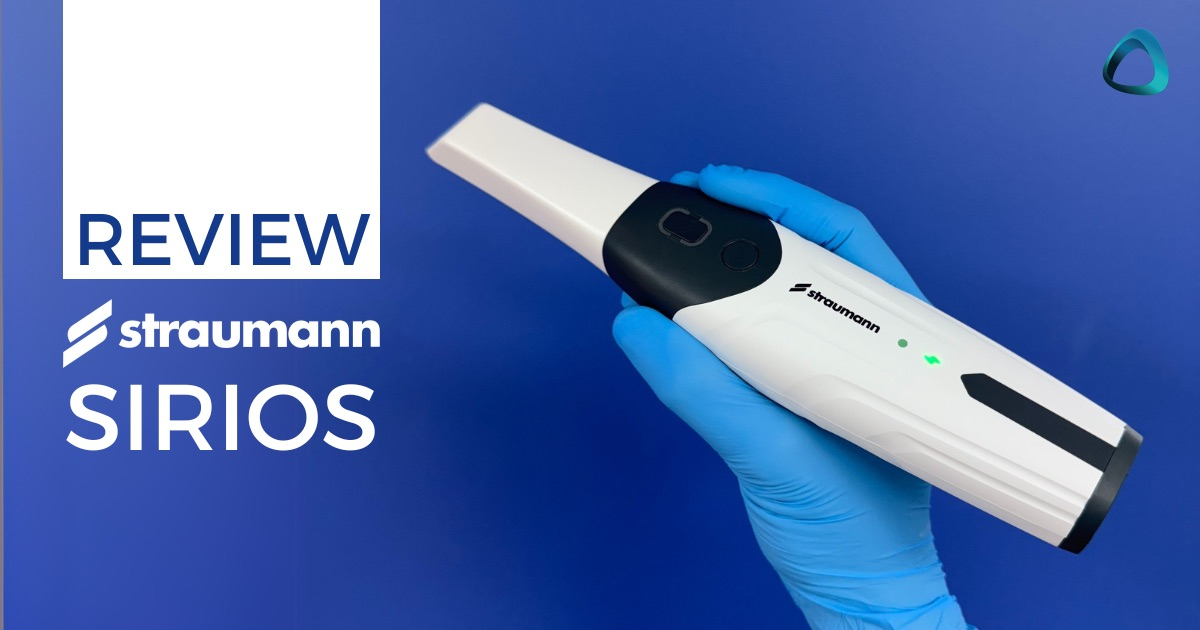Straumann's re-entry into the intraoral scanner market with the SIRIOS represents an intriguing development, especially following their acquisition of Alliedstar and the resulting integration of technologies. As one of the largest companies in dentistry, it is fascinating to oberserve their strategy and return in the IOS space.
The SIRIOS intraoral scanner, launched 6 months ago and which effectively replaced the Virtuo Vivo, is noteworthy as it uses the proven hardware and technology of Alliedstar's AS200E wireless scanner, but with significant software changes and deeper integration with the Straumann AXS platform.
Interestingly the SIRIOS is the first time that Straumann put their logo and name on a scanner. Dentalwings IOS and Virtuo Vivo was a Dentalwings product with the Straumann Group “digital solutions” branding on it - the same strategy as the Medit and 3Shape scanners they resell.
Having extensively reviewed both the AS200E and AS260 scanners previously, I was eager to evaluate how the SIRIOS performs with its Straumann refinements and what the difference really is to the AS200E. While the hardware remains unchanged from the Alliedstar product, Straumann has made substantial investments in software development, ecosystem integration, and user experience enhancements as they try position this device differently in the market.
In this review, I'll share my comprehensive experience with the Straumann SIRIOS, examining its design, scanning performance, software improvements, unique workflow integrations, and how it compares to other scanners on the market to help you determine whether this scanner deserves consideration for your practice's digital workflow.
As always, this review remains completely independent. Neither Straumann nor Alliedstar have had any involvement in writing this review. We do not sell Straumann products at iDD, and maintaining objectivity is central to our approach in providing information you can depend on.
Enjoy the review.
Download the Full Review PDF
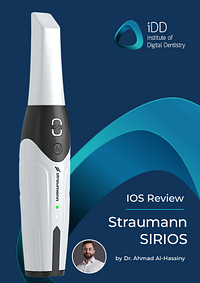
Download the Straumann SIRIOS PDF to get a full copy of this article to read later.
Get a high resolution printable copy of this review.
Review At a Glance
The Straumann SIRIOS represents a significant evolution in the company's digital impression offering. Another good scanner on the market that does well particularly in implant workflows through its automatic scanbody recognition and validation features. The connection to Straumann AXS portal streamlines the entire restorative process. While priced higher than its Alliedstar counterpart, the SIRIOS has a much more refined software experience, superior texture mapping, and integrations with Straumann's comprehensive digital workflow solutions.
Pros:
Cons:
Unboxing Video
Strauman SIRIOS Scanning Speed
Like my previous review of the AS200E, the Straumann SIRIOS has impressive scan speed capabilities. Straumann claims the SIRIOS can complete full arch scans in just 20-30 seconds, and that is basically true, placing it firmly in the category of "fast" intraoral scanners.
Scanning speed has become somewhat of a standardized feature across most modern intraoral scanners on the market, with the majority of devices capable of completing full arch scans in around 30 seconds with proper technique. What distinguishes the SIRIOS, however, is how its refined software complements the already capable hardware from Alliedstar.
In my testing, I found the SIRIOS consistently delivered fast full arch scans within the promised timeframe. This efficiency is due to a combination of factors including the scanner's hardware capabilities and the AI implementation in the Straumann software.
The AI functionality in the SIRIOS does very well in three critical areas:
- Efficiently ignoring artifacts (tongue, cheeks, dental instruments) during scanning
- Accurately removing any unwanted elements that may have been captured
- Seamlessly stitching images together with minimal errors
The software also gives you 3 toggles to control how aggressive the AI is at scanning the gingiva. This is useful for when you are scanning a single crown and may not want too much vs. scanning an edentulous ridge and want minimal AI interference.

The most notable improvement of the SIRIOS over the Alliedstar AS200E is the greatly enhanced color texture mapping. While the Alliedstar scanners have a more cartoon-like and low-res aesthetic, the SIRIOS scanner software delivers much more natural-looking textures and improved realism. You can see this below.
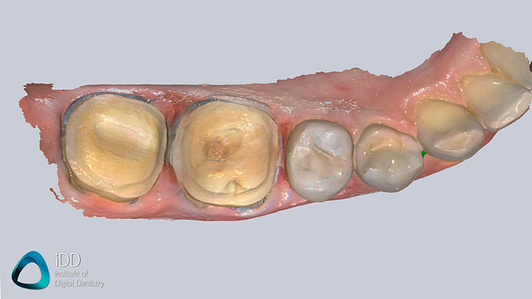
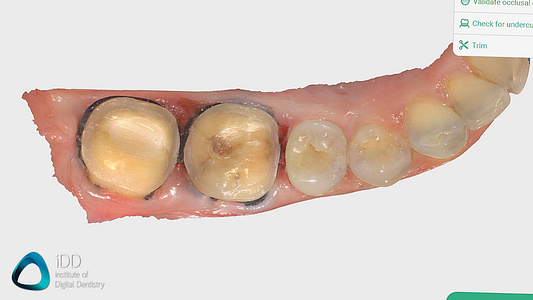
Same patient scanned with AS200E (left) and SIRIOS (right)
During scanning, the SIRIOS has the same cartoon like scan texture as the AS200E but after post-processing everything looks much better. It is interesting how software can change so much using the same hardware and also how Straumann are starting to differentiate their two product lines.
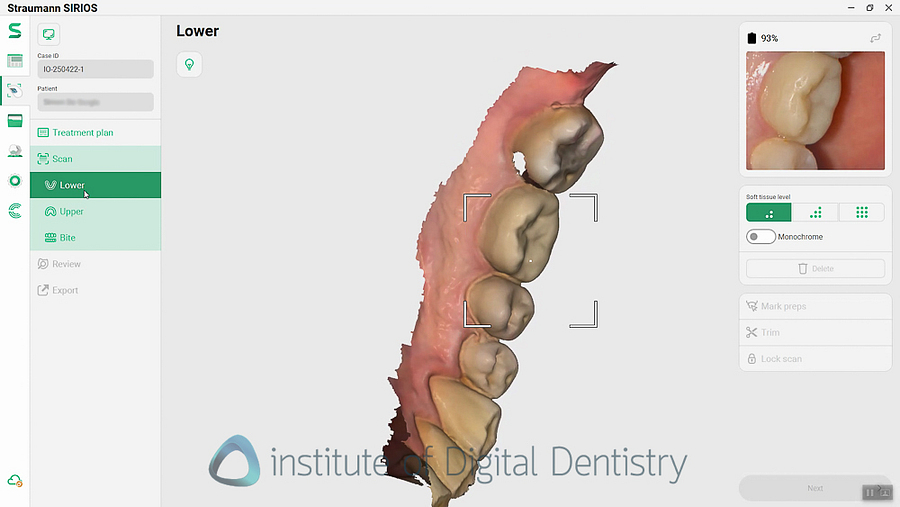
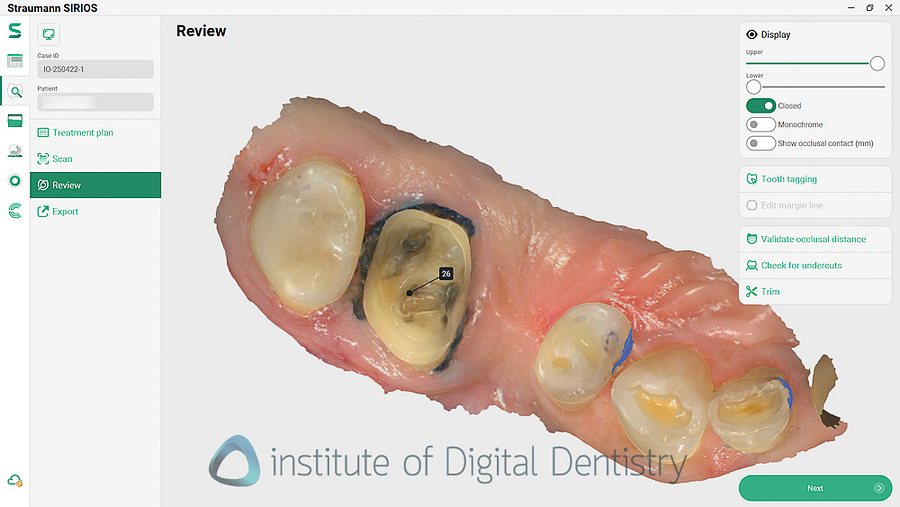
During testing with various clinical scenarios including full arches, quadrants, implant scans, and edentulous areas, the SIRIOS demonstrated excellent reliability. The scanner rarely loses tracking, quickly recovers when scanning is interrupted, and handles challenging cases like edentulous areas with impressive consistency.
Bite scans are also fast and the scanner automatically stops scanning once the bite is aquired. You can take multiple bites easily within the software. All other standard IOS features like heat maps for occlusion, checking undercuts etc are here as well.
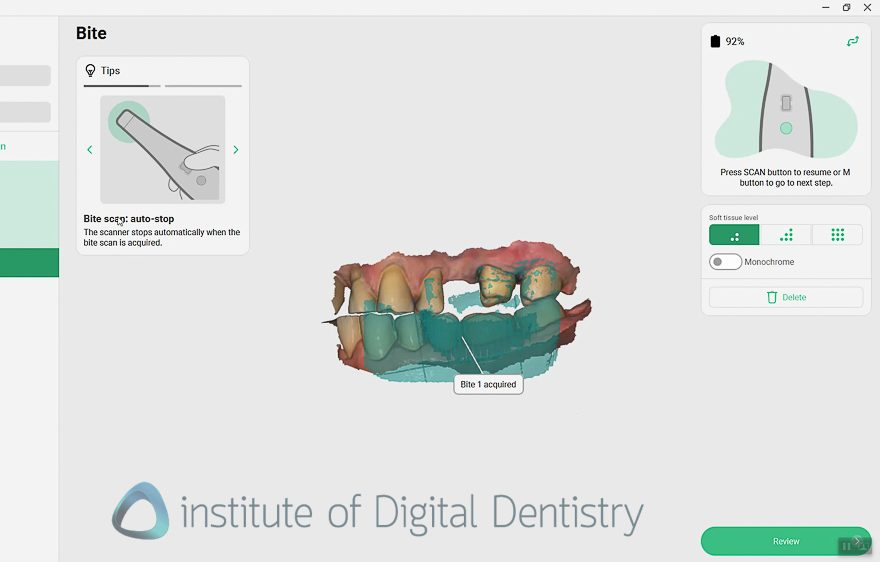
Design, Build Quality and Ergonomics of the Straumann SIRIOS
The Straumann SIRIOS is a Alliedstar AS200E but with Straumann's distinctive branding and color scheme. This scanner can also only be bought through Straumann making it more exlusive than Alliedstar in a way.
Weighing in at 245g (including battery), the SIRIOS is one of the lighter wireless scanners available today, making it comfortable to use for extended scanning sessions. For comparison, the TRIOS 5 weighs 299g and the Medit i700 Wireless 328g, with only the DEXIS 3800W matching the SIRIOS at approximately 240g.
The company has used the same hardware as Alliedstar but everything else is changed - including the software, UI/UX, branding, support, connectivity and integrations.
Something that is interesting is that the company has advised me that in the future even the hardware will be differentiated, making it two completely different products with Straumann SIRIOS being focused on Straumann customers, implant and ortho workflows, while Alliedstar will focus on all dentistry segments and continue to sell through distribution partners. Both will co-exist.
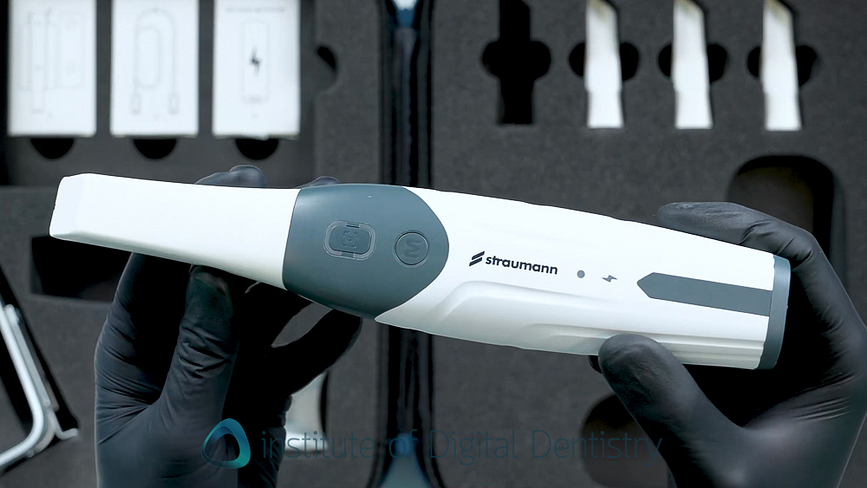
The SIRIOS retains the dual-button design as all other Alliedstar scanners – featuring scan buttons on both sides of the scanner body. This is actually very useful and ensures you can always reach a button regardless of your grip style, allowing operation with either your thumb or index finger.
Beyond the scan buttons, the device includes a Mode button for progressing through the scanning workflow and remote control functionality. There's no dedicated power button; the scanner wakes automatically when picked up or when a button is pressed, entering sleep mode after periods of inactivity to preserve battery life.
There are two LED's that indicate connection status and battery life.
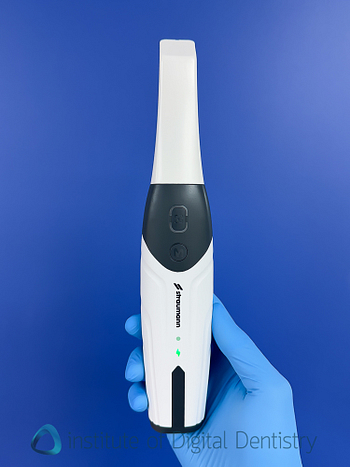
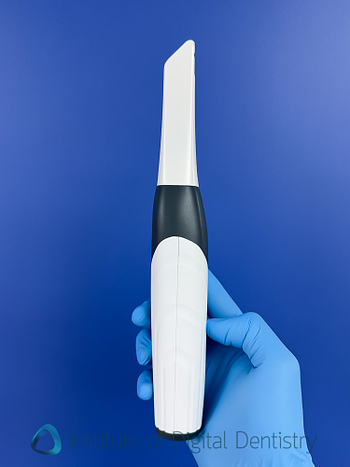
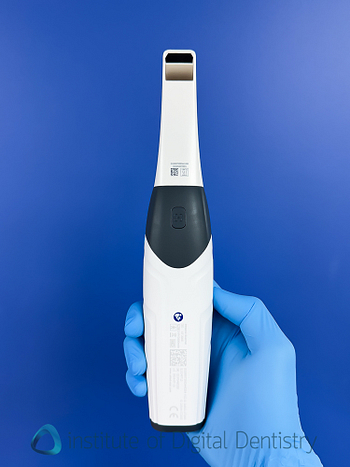
The Straumann SIRIOS utilizes the same wireless technology as the Alliedstar AS200E, relying on a TP-LINK wireless adapter that connects to the laptop via a USB 3.0. Straumann claims a reliable range of up to 7 meters from the connection hub. In my testing, I found the connection to be stable throughout the operatory with no noticeable lag or interruption. This wireless functionality contributes to the overall ergonomic experience, eliminating the tangle and drag of cables that can impede smooth scanning movements.
Lastly the SIRIOS features the same charging based as the AS200E aswell, utilizing a two-piece charging station consisting of a metallic base and a plastic scanner dock. The charging technology uses completely wireless induction charging rather than metal connectors. When the scanner is placed in its dock, it begins charging automatically without requiring any additional steps.
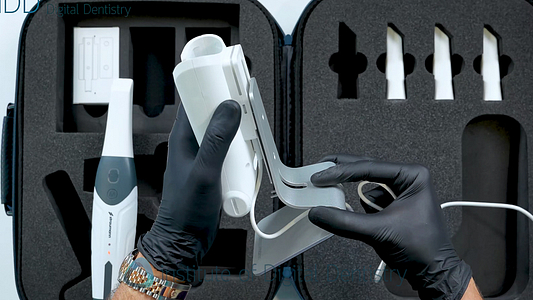
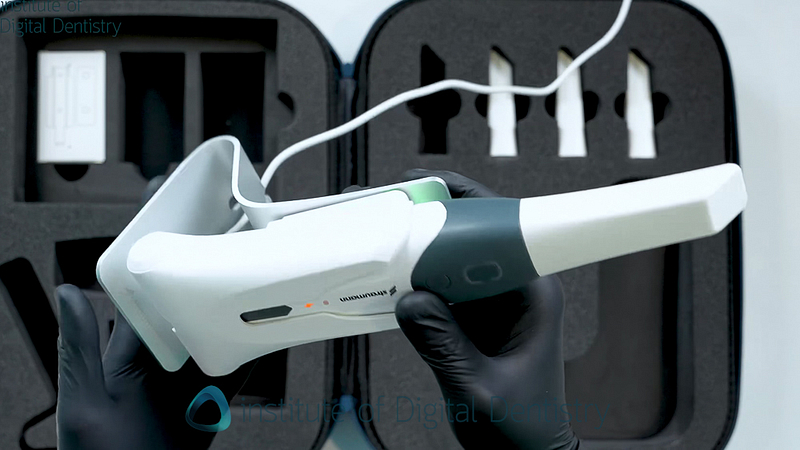
The charging base itself requires connection to a laptop via USB-C cable for power, but importantly, this connection is only necessary for charging - the scanner functions completely wirelessly during operation. An LED indicator on the charging base provides visual confirmation of charging status. In the base of the charging dock, you can also charge a spare battery.
Battery performance is great, offering what the company says is up to 2 hours of continuous scanning on a single charge sufficient for approximately 60 standard cases. This ensures all-day scanning capability for most practices without requiring mid-day recharging. Two batteries come with the scanner which can be removed and inserted in the base of the scanner. This is one aspect I hope they remove in the future as replacing batteries in this way feels a bit economic, the next scanner should be like the Sensa, which no longer has removable batteries.
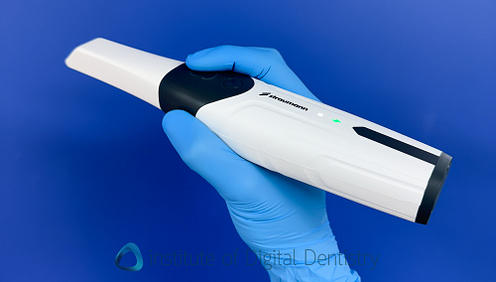
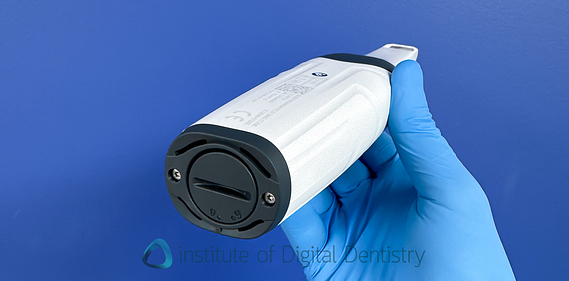
The overall build quality is good and close to premium, but I would not say it is the level of finish as a TRIOS 5/6 or Primescan 2. The AS200E was released 2 years ago so it does show its age a little bit.
SIRIOS Scanner Tips
The SIRIOS has two scanning tip sizes - large (22 x 18mm) and small (18 x 16mm) options. With the SIRIOS itself you get four large scanning tips in the box. Small tips can be bought seperately.
The scanner tips are non-reverse scanning tips and can be autoclaved up to 180 times for the large tips and 60 times for the small tips.
The SIRIOS heats its scanner tips quickly, typically within about 10 seconds, eliminating long waiting periods before scanning can begin. There's no visual indicator when the tip reaches optimal temperature, but the quick heating system means this is rarely an issue in practice.
While the tips themselves haven't changed in design from the Alliedstar scanners, their performance remains excellent, and the consistency of the experience is enhanced by the improved software.
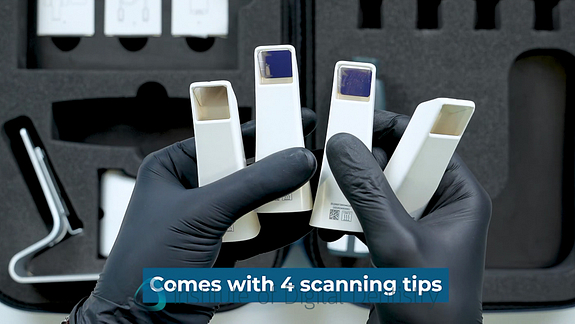
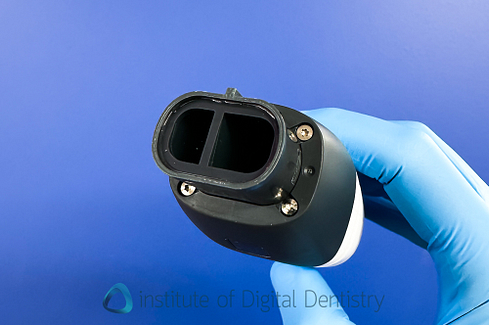
SIRIOS Software and Ecosystem
Here is where the SIRIOS truly distinguishes itself completely from Alliedstar.
The SIRIOS software is a much more premium-looking software and is where Straumann's expertise shines. This software, simply called Straumann SIRIOS, reflects significant development over the AS Connect and ScanPro softwares used with Alliedstar devices. The software is based on the same one that was used with Virtuo Vivo but has been revamped for SIRIOS.
The SIRIOS software features a generally modern interface with intuitive navigation and good patient management capabilities. The case creation process is straightforward, allowing clinicians to specify treatment information, including tooth selection, implant components, material preferences, and shade selection. The only critque I have about this software is that it can feel a bit cluttered at times.
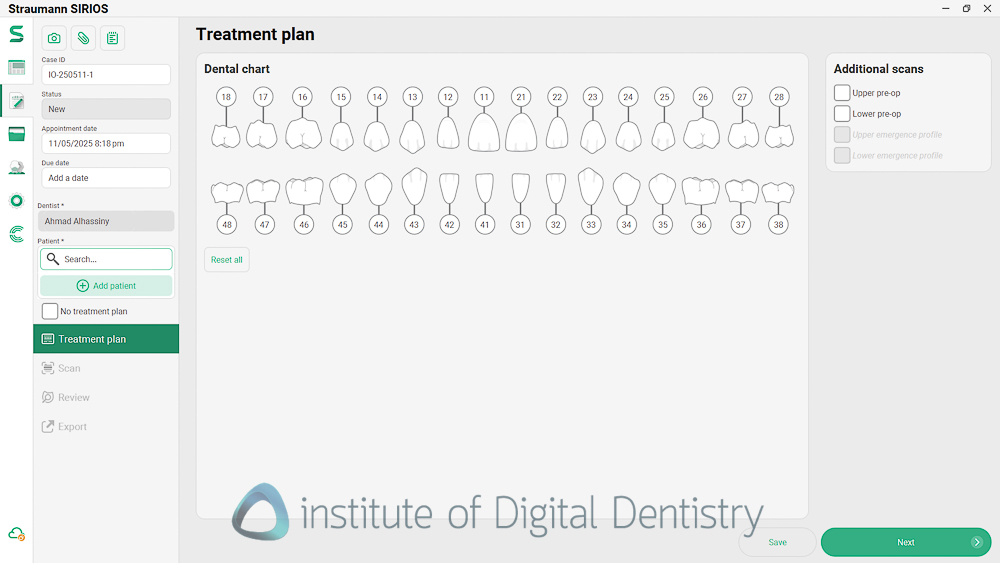
The most notable improvement is the elimination of the separate scanning application. Where the Alliedstar scanners required a seperate ScanPro window for scanning and AS Connect for patient management, the SIRIOS integrates all functionality into a single, cohesive software experience. This streamlined approach significantly improves the feel of the entire process - much like other premium scanners.
It is easy to start a case and get scanning right away, with the software also tracking cases by appointment date and time. On the main screen there is day sheet that at first I found quite old-school looking and didn't really appreciate it being there, but it is actually quite useful to find cases again without searching for names by simplying going back to the day that you scanned the patient.
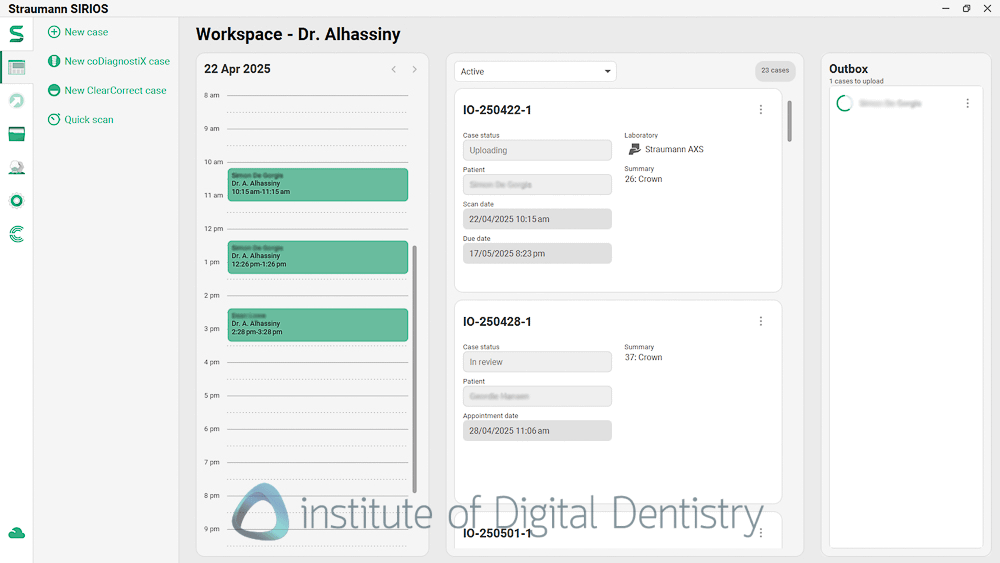
While on the scanning part of the software, the UI overall looks good and guides you to connect your wireless scanner to your software. This is done quickly. There are also on-screen scanning tips and the scan window is laid out nicely. During post-processing the software plays a cool looking animation which is a nice touch. The entire thing feels a lot more premium than Scan Pro.
Another big difference in this software when compared to Alliedstar is the texture mapping after post-processing. Scans just look better with more realistic colours and premium looking scans. Quite a lot different to AS 260, AS200E or even the new Sensa.
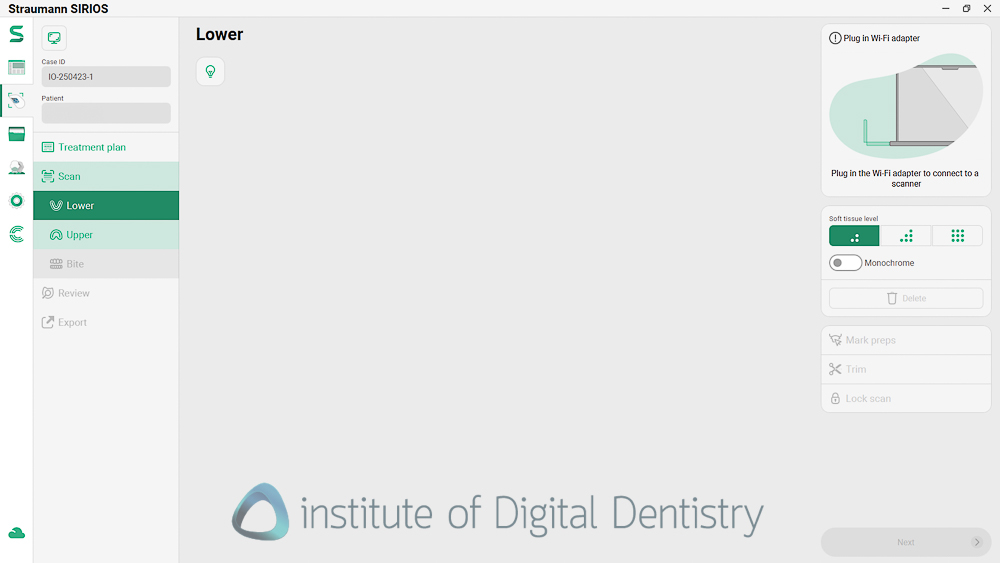
One aspect that did stick out to me however is the loading screens. When you start and stop the scanner there is a loading screen each time, even when you just want to add to your scan, these can be annoying. In fact, this software although vastly improved from the Virtuo Vivo days, is the same base software as back then and it has some interesting quirks to it that I wish the company sorts out in the future. One of these is (once again) consistent loading screens for example when clicking into the case management menu. Also, I think overall the software could use a revamp in terms of making it look a bit more modern.
SIRIOS, Straumann AXS + Other Integrations
What sets the SIRIOS apart from other scanners on the IOS market is its integration with the broader Straumann digital ecosystem, particularly through Straumann AXS, their cloud-based digital platform.
After scanning with a click of a button your IOS scan files can be uploaded to Straumann AXS, ensuring storage and easy access to the next steps in treatment. The company also tells me that with the next software update, files will automatically and seamlessly sync to the AXS platform.
Every major company is building a cloud platform these days. This is the future of dentistry. And for Straumann this is AXS which will turn into the companies hub for all their services and features it seems. Much like Dentsply Sirona is building DS Core, 3Shape with Unite etc.
AXS has multiple different features most notably Smilecloud which is a famous (and excellent) 3D smile design software and integration with Rapidshape printers. Interestingly no MIDAS yet, although I expect this to come given what we just learnt at IDS 2025.
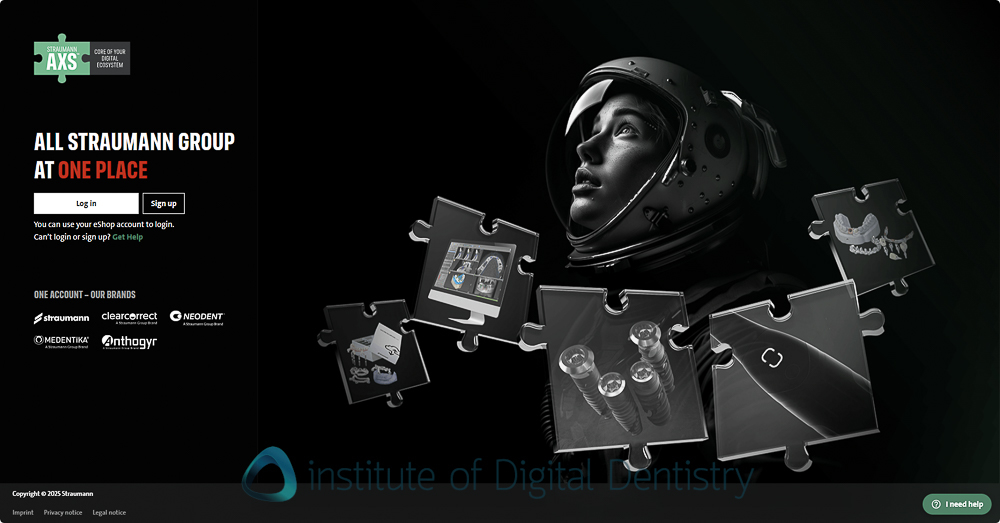

Although this integration is nice, I hope in the future Straumann make this more in-built into the software. What I mean is that currently the integration consists of an internet browser window opening and having your scans automatically uploaded to the cloud in AXS. It would be even better if all AXS things are done seamlessly within the SIRIOS software itself.
The SIRIOS also has a few other integrations and features:
- Automated Scanbody Recognition - the SIRIOS can automatically detect and validate Straumann scanbodies.
- Surgical Planning Integration - direct integration with coDiagnostiX for implant planning and surgical guide design.
- Orthodontic Workflow - direct connectivity to the ClearCorrect Dr Portal for aligner case submission.
- Smile in a Box Integration - connection to Straumann's full-service solution for guided surgery.
- CARES Integration - this is Straumann's CAD/CAM software.
Given how the industry is developing, I would not be surprised if they one day Straumann put AI CAD on this portal and then the company will have a complete end to end CAD/CAM workflow - Scan (SIRIOS), Design (CARES), Print (MIDAS)...
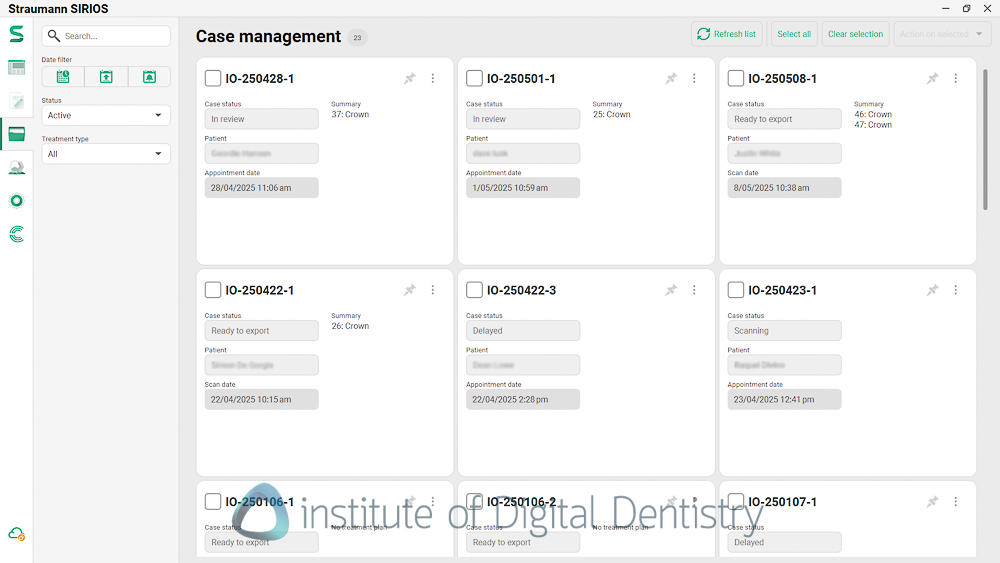
One interesting thing is the absence of software applications within the SIRIOS software itself. There are currently three applications being developed for the AXS portal and are expected to be released in June 2025. I got a sneak peak at them and these include:
- Model Builder - standard model builder for hollow and solid models
- Scan Compare - compare changes in 2 or more different scans over time
- Orthodontic simulator - a standard orthodontic simulator to show before and after treatment
This push for everything to be on AXS represents a stark contrast to both market trends and the Alliedstar software which has developed several applications all within the scan software itself. You can see how the priority for Straumann is building AXS for the future.
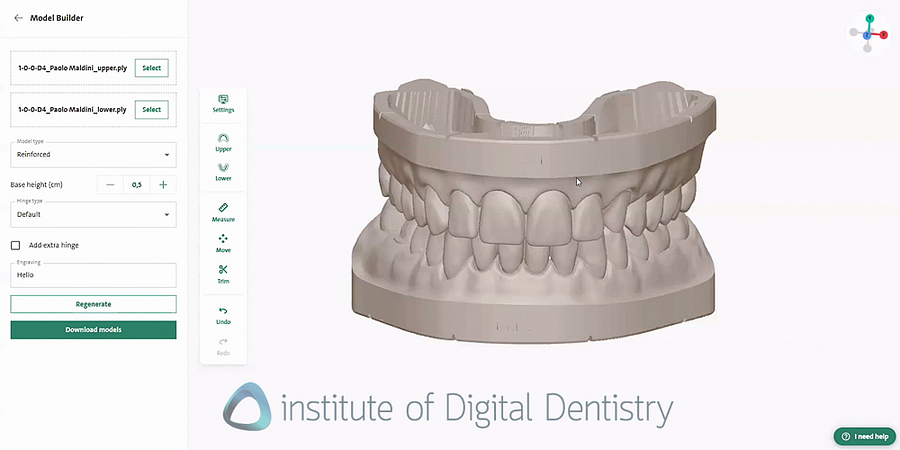
SIRIOS Export Options
The scan export options include the market standard now - STL and PLY maintaining an open architecture that allows practices to work with labs and services of their choice. However, the tight integration with Straumann's ecosystem provides additional benefits for those working primarily within their platform.
While not as extensive as some competitors' app ecosystems (like Medit), these integrations cover the entire breadth of the Straumann ecosystem. It's also worth noting that, like the Alliedstar scanners, the SIRIOS is not currently accepted for Invisalign. However, it integrates with Straumann's own ClearCorrect system.
How Much Does the Strauman SIRIOS cost?
The Straumann SIRIOS is priced at $12,955 USD, making it one of the more affordable wireless scanners on the market but a mid-range scanner price when looking at the market as a whole.
This number also is around $2,000 above the Alliedstar AS200E ($10,995), which is an interesting move by the company given it is the same hardware, and maybe justified with the enhanced software integration and Straumann ecosystem benefits.
SIRIOS operates on a subscription-free model like most modern scanners with no ongoing license fees for the core scanning functionality.
The only additional ongoing costs are the scanning tips, which are $65 USD per tip. This translates to approximately $0.36 per scan or $1 per scan for the small tip – again higher than Alliedstar pricing.
The cost of the SIRIOS positions it as a accessible entry point to both digital dentistry and the Straumann ecosystem, likely making it attractive for practices already using or considering Straumann implants and restorative solutions.
There is also the new Straumann MIDAS that was announced at IDS 2025 - which brings potential to some very cool workflows using SIRIOS + AXS + MIDAS. An entire in-house workflow we are likely to see later in the year.
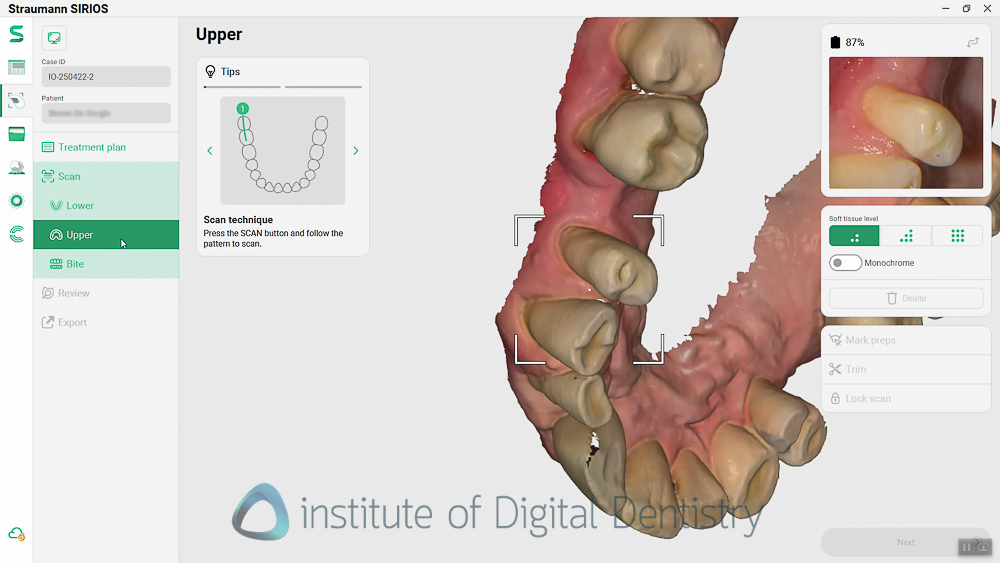
Conclusion
The SIRIOS represents a significant return to the intraoral scanner market for Straumann. By leveraging the hardware of the Alliedstar AS200E and focusing their development efforts on software refinement and ecosystem integration, Straumann has created a compelling scanner that delivers excellent scanning performance at a competitive price point.
To me, this is what scanning with the AS200E should feel like - a cohesive software ecosystem to back up what is quite impressive hardware.
The SIRIOS does well in several key areas:
- Scanning Performance - fast, reliable scanning with nice color texture mapping and AI capabilities that handle challenging clinical situations effectively.
- Ergonomics - lightweight, wireless design with dual-button configuration makes the scanner comfortable to use
- Software Integration - The software experience eliminates the fragmentation of the Alliedstar platform, while the integration with Straumann AXS creates some useful workflow enhancements.
- Ecosystem Benefits - For practices already utilizing Straumann products, the SIRIOS creates a seamless digital workflow that spans from impression to final restoration.
The primary advantages of choosing the SIRIOS over the Alliedstar AS200E is the better software experience, superior scan textures, and the integration with Straumann's digital ecosystem. For practices already invested in the Straumann workflow, these benefits may justify the price premium.
One of the most exciting things is that Straumann now finally have a good intraoral scanner in their portfolio. Purchasing Alliedstar is in my opinion one of the best acquisitions in the IOS market as of late, because the hardware is very good. On top of that, Straumann announced a MIDAS collaboration at IDS 2025, meaning the company now was a total in-house CAD/CAM workflow - scan (SIRIOS), design (CARES), print (MIDAS). One of only two or three scanner companies that can make this claim.
The SIRIOS isn't without limitations. The software ecosystem, while functional, isn't as extensively integrated as some competitors, and practices focused on Invisalign will need to consider alternatives. Additionally, those without existing Straumann ecosystem investment may find less value in the AXS integration features that differentiate the SIRIOS from its Alliedstar counterpart. You may actually find having to use AXS annoying in fact. The scanner software itself has no apps directly within it and you are forced to use the AXS portal for many of these otherwise fundamental features.
In saying that, for practices seeking a reliable, high-performance wireless scanner with particular emphasis on implant workflows and Straumann integration, the SIRIOS represents a great value proposition. Straumann's return to the scanner market shows they've learned valuable lessons from the Virtuo Vivo experience, delivering a product that properly leverages their strengths in digital workflow development while building on proven scanning technology.
To me this is the first step in their comeback, and I am very curious to see what the company does in the future as they further differentiate their Alliedstar and Straumann line of IOS devices.
Evaluation Ratings
Scanning Speed
Scanning Flow
Scanner Size
Ease of Use
Scanner Software
Investment Cost
Additional Features
Wireless Scanner
Wireless via TP-Link Dongle
Caries Detection
No caries detection or diagnostics
Software Apps
None directly in the software but integration with Strauman AXS
CAD/CAM Software
Straumann CARES
Subscription Requirements
None
Autoclavable Tips
180 or 60 times per tip
Download the Full Review PDF

Download the Straumann SIRIOS PDF to get a full copy of this article to read later.
Get a high resolution printable copy of this review.

